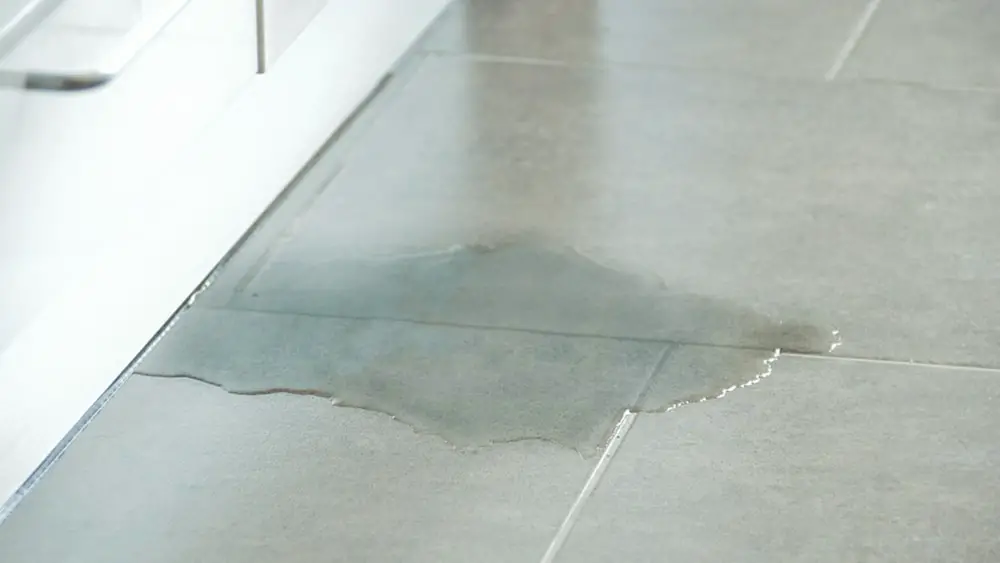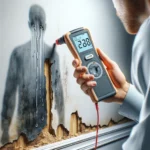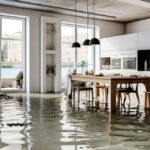You might be enjoying a perfectly normal day when suddenly, from the corner of your eye, something grabs your attention, followed by a feeling of imminent doom: water coming up from floor surfaces where it definitely shouldn’t be.
Signs of water damage under the floor usually point to an issue that needs addressing pronto. At the very least, it requires a quick investigation. At worst, it might even warrant water damage repair services.
At WetReset, we have seen thousands of cases where hidden moisture causes damage before homeowners even realize there is a problem. Identifying the early warning signs can save you small fortunes in repairs and prevent dangerous mold growth in your home.
This short blog post will show you how, starting with the most common signs.
Common Signs of Water Damage Under Floors
The signs of water damage under a floor aren’t always dramatic or obvious. Sometimes, the clues are incredibly subtle, demanding careful attention to detect before major damage occurs.
Unexplained Water on the Floor
One of the most confusing situations homeowners face is finding water on the floor but no leak in sight. This mysterious moisture can appear in various forms, such as:
- Small puddles that seem to come from nowhere;
- Damp spots that reappear after wiping them dry;
- Moisture that shows up primarily during rainy weather;
- Wet areas near appliances, even when they’re not running.
For example, one of our customers recently called us about recurring dampness along one wall of her otherwise beautiful kitchen. Despite checking all the visible plumbing, she couldn’t find any leaks.
Our inspection revealed an almost imperceptible pinhole leak in a water pipe behind the wall that was slowly seeping water under the flooring. This water would then slowly migrate upward through the floor seams, creating the mysterious wet spots.
Warped, Buckled, or Soft Flooring
Your flooring materials often point to hidden moisture damage, with different flooring types revealing distinct symptoms.
Wood Floors: Look for boards that cup (edges higher than centers) or crown (centers higher than edges). These deformations happen when wood absorbs moisture unevenly.
Laminate/Vinyl Flooring: These materials often bubble, lift at the edges, or develop soft spots when moisture attacks the backing or substrate. Since these products are usually installed as a floating floor system, they are especially vulnerable to moisture rising from below.
Carpet: Pay careful attention if areas of your carpet feel damp or spongy when walked on. An awful musty smell that persists (despite cleaning) often indicates moisture trapped in the padding underneath.
Discoloration and Stains
Aside from the incredibly obvious signs of an issue, such as water coming up from the floor, other clues exist in the form of distinctive stains and marks:
Dark stains on hardwood often indicate moisture that has penetrated the finish. In vinyl and laminate, you might notice yellowing or darkening that spreads gradually. Tile floors might seem immune to water damage, but discolored grout or a white, powdery substance points to moisture problems underneath.
Pay special attention to discoloration patterns. Stains that appear around the perimeter of rooms often indicate water seeping up from below, while isolated spots might point to leaks from above.
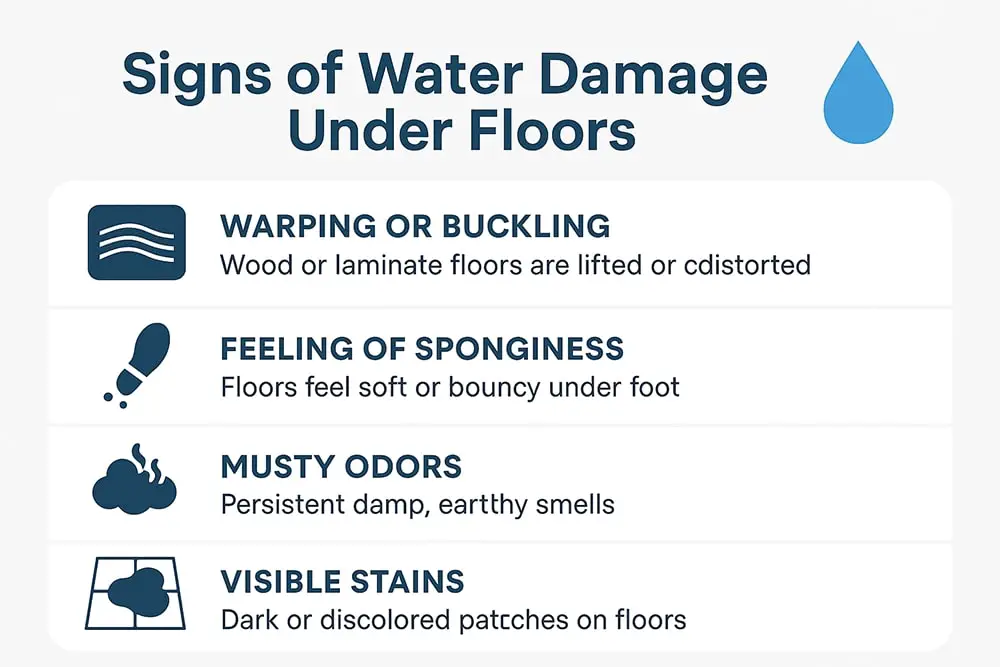
Musty Odors and Mold Growth
Despite having a vast array of modern tools at your disposal, our sense of smell can be one of the best tools for detecting signs of water damage under floor surfaces. A persistent musty smell – particularly one that intensifies in humid weather – strongly suggests hidden moisture issues.
Various types of mold along baseboards or floor seams are a serious red flag. By the time mold appears on surfaces, significant moisture has likely accumulated underneath.
We recently had a water damage job involving a family who couldn’t understand why their young son’s asthma worsened whenever he played in the basement. The carpet looked perfectly dry, but our moisture testing revealed extensive dampness in the concrete slab below.
High Water Bills
A higher-than-normal water bill is also one of the leading signs of water damage under a floor, owing to an increase in water usage caused by a broken water pipe.
Of course, not all leaks affect flooring, but many occur in areas where escaping water can reach floors.
Even small leaks can waste surprising amounts of water. Again, a recent inspection job carried out by our emergency water damage team revealed a pinhole pipe leak – dripping just once per second – that resulted in nearly 3,000 gallons of wasted water per year.
What Causes Water Damage Under Floors?
Knowing the root cause of these types of issues can better prepare you to react going forward. It helps to be informed of the reason why this is happening. To that end, the common culprits behind water coming up from the floor are as follows:
Leaking Pipes or Plumbing Issues
Plumbing runs throughout your home, often directly beneath or within the floors themselves. Slow leaks from copper pipes, PVC joints, or drain lines frequently cause water damage long before they’re detected.
Slab leaks – or breaks in pipes that run through concrete foundations – are particularly problematic. They can leak for months or even years before showing obvious signs, with water following the path of least resistance up through your floor.
Appliance Leaks
- Your dishwasher, refrigerator, washing machine, and water heater can all leak in ways that direct water beneath the flooring. Supply lines crack, drain hoses develop small holes, and connections loosen over time.
- Refrigerator ice makers are notorious for creating slow leaks that damage the floor underneath and behind the appliance. As these areas remain largely out of sight, the damage often progresses before discovery.
Foundation Cracks and Groundwater Seepage
- Water doesn’t always come from your plumbing. Groundwater can enter through cracks in your foundation, particularly after heavy rains or during periods of high water table. This pressure forces moisture up through concrete slabs and into your living spaces.
- Poor drainage around your home’s exterior can also contribute to the issue of water on the floor with no leak. When gutters overflow or downspouts deposit water near the foundation, that moisture seeks entry points into your home.
HVAC and Air Conditioning Condensation
- Your heating and cooling systems generate condensation during normal operation, but when drain lines clog, this water can end up beneath your flooring.
- In homes with underfloor ductwork, condensation on cold ducts can also drip onto the subfloor or joists, resulting in damaged areas that aren’t visible from above.
How to Check for Hidden Water Damage Under Your Floor
If you have the aforementioned signs of water damage under the floor, the following testing methods can help confirm your suspicions.
DIY Moisture Testing Methods
One tried and tested age-old method is to press a dry paper towel firmly against suspicious areas. If it picks up moisture, you have confirmed dampness that shouldn’t be there. Simple, but very effective.
For a more precise way to detect water leaks, moisture meters from hardware stores can detect elevated moisture levels through flooring. These relatively inexpensive tools are particularly useful for wood and laminate floors, where they can identify problem areas before visible damage occurs.
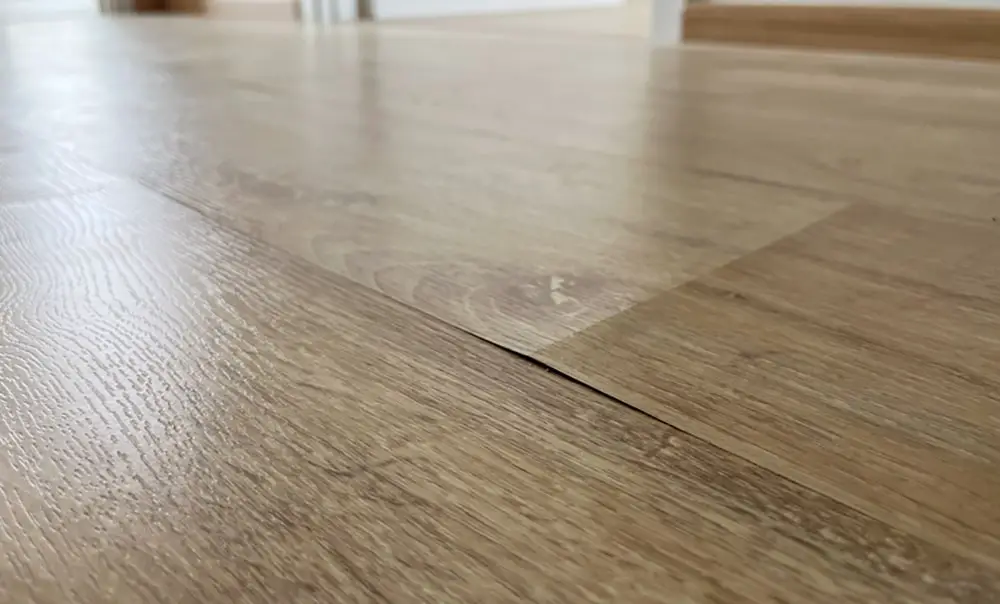
Looking for Structural Weakness
Another simple but effective test is to walk slowly across suspicious areas, feeling for movement, softness, or unusual give in the flooring. Pay extra attention to areas around toilets, tubs, showers, and under sinks where water exposure is most likely.
If your home has a crawl space or unfinished basement, examine the underside of the flooring directly. Look for water stains, mold growth, or dampness on joists and subflooring. We often find that a flashlight directed at an angle can show issues that aren’t obvious with direct overhead lighting.
Professional Inspection Options
DIY methods aren’t always conclusive, with professional testing offering more concrete answers. Infrared thermal imaging, for example, can detect temperature differences that indicate moisture without damaging floors.
Professional-grade moisture meters can locate problem areas more precisely than the inexpensive consumer models we mentioned earlier.
WetReset offers modern moisture inspections using state-of-the-art technology to find hidden water damage in the home before it becomes a major problem. Our experienced technicians know exactly where to look and which signs indicate serious issues versus normal conditions.
How to Fix Water Damage Under Floors
Once you’ve confirmed water damage, taking quick action may help prevent further deterioration. We can’t stress this enough: reacting immediately to issues will greatly reduce the likelihood of incurring costly repairs.
Immediate Steps to Mitigate Damage
First, stop the water at its source, in whatever form that takes. For example, this might mean turning off water to a leaking appliance, fixing a pipe leak, or addressing drainage issues around your foundation. Either way, do it quickly.
Next, dry the affected area completely. Fans, dehumidifiers, and good ventilation help remove moisture before mold becomes a threat. For significant amounts of water, extraction equipment will probably be necessary to remove water from the padding and subflooring.
💧WetReset Pro Tip💧
Document everything with photos for insurance purposes before beginning repairs. Many insurance policies cover sudden water damage, but coverage varies depending on the cause.
When to Repair vs. Replace Flooring
If water exposure was mercifully brief and limited, drying thoroughly and refinishing damaged areas might be all you need to do. However, when subflooring has been compromised or mold has developed, more extensive replacement is a prerequisite.
Solid hardwood floors can sometimes be saved with proper drying and refinishing, while engineered wood, laminate, and vinyl products usually require replacement if severely damaged.
Preventing Future Water Damage
Regular maintenance helps prevent water problems before they start:
- Inspect visible plumbing connections monthly for small leaks;
- Check appliance hoses and connections for wear or damage;
- Improve drainage around your home’s foundation;
- Consider waterproof flooring options in moisture-prone areas;
- Install water leak detectors near high-risk areas.

Don’t Ignore the Warning Signs!
Damage caused by water coming up from the floor rarely improves by itself. Ultimately, the longer moisture remains trapped, the more extensive (and expensive) the repairs become.
If you have noticed any signs of water damage under floor surfaces in your home, a professional assessment can gauge the extent of the problem and the best restoration approach.
WetReset can detect and address hidden moisture issues before they destroy your home’s structure and, more importantly, your family’s health. Get in touch if you need help! Contact WetReset Today for Expert Water Damage Services.

